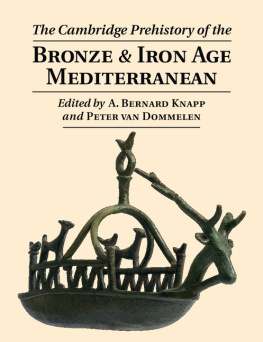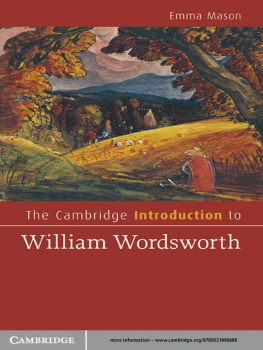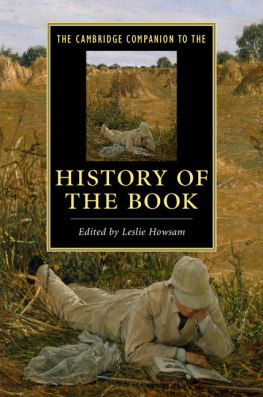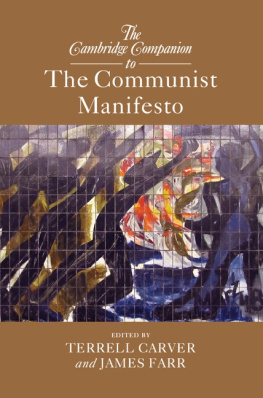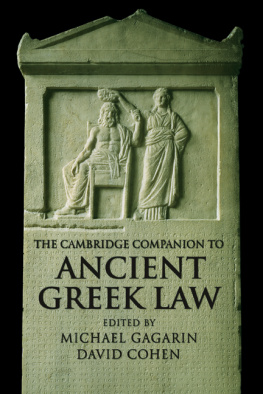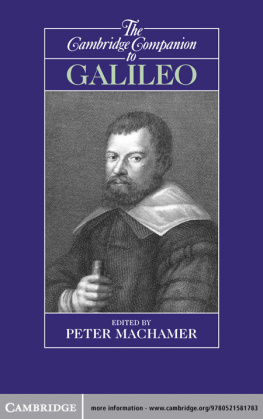Portrait of Cambridge
C. R. Benstead

This electronic edition published in 2011 by Bloomsbury Reader
Bloomsbury Reader is a division of Bloomsbury Publishing Plc, 50 Bedford Square, London WC1B 3DP
Copyright C. R. Benstead 1968
The moral right of the author has been asserted
All rights reserved
You may not copy, distribute, transmit, reproduce or otherwise
make available this publication (or any part of it) in any form, or by any means
(including without limitation electronic, digital, optical, mechanical, photocopying,
printing, recording or otherwise), without the prior written permission of the
publisher. Any person who does any unauthorised act in relation to this publication
may be liable to criminal prosecution and civil claims for damages
ISBN: 9781448206469
eISBN: 9781448206100
Visit www.bloomsburyreader.com to find out more about our authors and their books
You will find extracts, author interviews, author events and you can sign up for
newsletters to be the first to hear about our latest releases and special offers
Contents
The bibliography of Cambridge is immense. Apart from studies of the University itself and particular periods of its existence, there are histories of the colleges and a ceaseless flow of memoirs from old members once resident in them. In addition, there are illustrated guide-books, some of them excellent; a local antiquarian society whose proceedings are invaluable; and, not least, an evening paper, the Cambridge News, that completely covers University affairs and, not long ago, won the prize for being the best newspaper of its kind in the country.
The University was some four-hundred-years-old when the great, if querulous, Dr Caius started a notable sequence with Historiae Cantebrigiensis Academiae ab urbe condita in 1574, and prominent among the many historians and commentators on the local scene during the centuries that followed are Thomas Fuller with his lively approach to The History of the University of Cambridge in 1655; Edmund Carter, using the same title in 1753; George Dyer adding colleges to it in 1814; Henry Gunning, in 1854, relating his Reminiscences of Cambridge over a period of seventy years; and James Bass Mullinger producing the first of three volumes bluntly entitled The University of Cambridge in 1873, with the others in 1884 and 1911. Also in that year, 1911, came Mayors Cambridge under Queen Anne with its translation of Uffenbachs critical account of college libraries in 1710. Edward Conybeares Highways and Byways in Cambridge and Ely first appeared in 1910, and Arthur Grays Episodical History of the University in 1912. Its companion, The Town of Cambridge, followed in 1925. Moreover, there is a range of literature, less serious though still informative within its self-imposed limits, of which Sketches of Cantabs by John Smith (of Smith Hall) Gent, will suffice for an example. According to the old Morning Post, in 1850, it drew attention to some obvious betterings much to be desired in the tone and manners of a too gent-ridden portion of the new generation of Cambridge lads.
Architecture is a subject in itselfcomprehensively dealt with, in 1886, by Willis and Clark in the four volumes entitled The Architectural History of the University of Cambridge, and later, in 1959, given worthy recognition in the two-volume report of the Royal Commission on Ancient Monuments. Bryan Little, in his Cambridge Discovered, published in 1960, happily develops the University scene through its architectural phases. Then there are the maps of Lyne in 1574, Braun in 1575, Hamond in 1592, hardly accurate but revealing nevertheless, and the collection, Old Plans of Cambridge, published by Clark and Gray in 1921. There are, too, pictorial records dating from Loggans Cantabrigia Illustrata in 1688 to Le Keuxs Memorials of Cambridge in 1841, and although Ackermann makes the modest dome of the Gate of Honour peep over the lofty roof of the Senate House, and Loggan fails as a prophet by giving one college a non-existent frontal range, these old pictures are often revealing and some are undoubtedly attractive.
But in a class by themselves are the four volumes of Coopers Annals of Cambridge, published over the ten years from 1842, for they are virtually a reproduction of the local archives, so complete and revealing that Cooper himselfTown Clerk from 1848 to 1866earns the gratitude of anyone who writes about the Cambridge of long ago. I am also indebted to Miss Mary Blamire Young for allowing me to quote from the letters of her greatgrandfather, whose life she describes in her book, soon to be published, Richard Wilton, A Forgotten Victorian. Some of these letters, from a future Canon of York in residence at Cambridge, are of unusual interest since they were written on the eve of the great reconciliation between Town and Gown, and during a period when the University itself was at last throwing off its medieval shackles.
Cambridge, 1967
C.R.B.
It can be accepted, I think, that wherever English is spoken by responsible adults, mention of Cambridge at once calls to mind a great University. Nor can it be doubted that to the visitors who pour in by coach and car during the Long Vacation, making it possible to walk along Kings Parade for appreciable distances without hearing a word of English, Cambridge is still the splendid survival of a medieval University with a small town adjoining. That time and, particularly, the Cambridge Award Act of 1856 have largely reversed the emphasis is not at once apparent. Today, the city of Cambridge embraces a population of nearly one hundred thousand, and exists in its own right as a market town with industry such as Pye and the cement works on the perimeter. Its good fortune, as well as its glory, is the presence of the University that bears its name.
But Cambridge is rapidly changing. Soon after Hitlers war when I added my name to an unbroken roll of University Proctors dating back to the fourteenth century, and walked at night with my constables, the Park Street area was still a warren of dim-lit passages and mysterious alleys, so fascinating that on one occasion an American photographer insisted on posing us for a flashlight record of the scene. Now a multi-storied carpark dominates a broad approach. Elsewhere a sprawl of housing estates carries the city to villages that are themselves dormitories for those who add to the traffic congestion; extensive re-development threatens the commercial centre; relief roads are planned with the purposeful thrust of the Romans whose Via Devana virtually marks the main road through the city today; and there is little doubt that before long the older colleges and University buildings, with a few churches and possibly a Victorian railway station remarkable for what is said to be the longest platform in the country, will be all that remains to tell of a more solid if less material age. For the sight-seeing visitor, Cambridge must ever be a square miles or so of antiquity, andhappilyit is inviolate.
Any portrait of Cambridge is therefore one of a University that down the centuries has adjusted itself without betraying its heritage. Today, in the Senate House, when undergraduates take their B.A. degrees, the Vice-Chancellor pronounces the same unchanging Latin formula:
Auctoritate mihi commissa admitto te ad gradum Baccalaurei in Artibus in nomine Patris et Filii et Spiritus Sancti.



